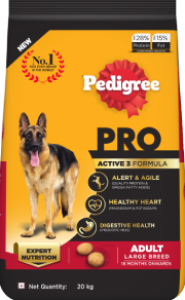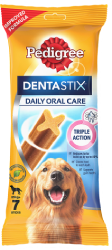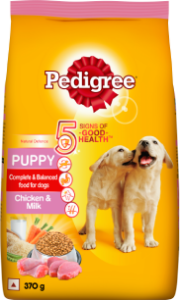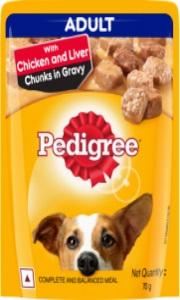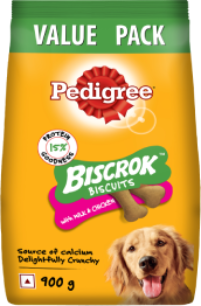
In this section
8 Tips on Feeding Your Adult Dog the Right Way
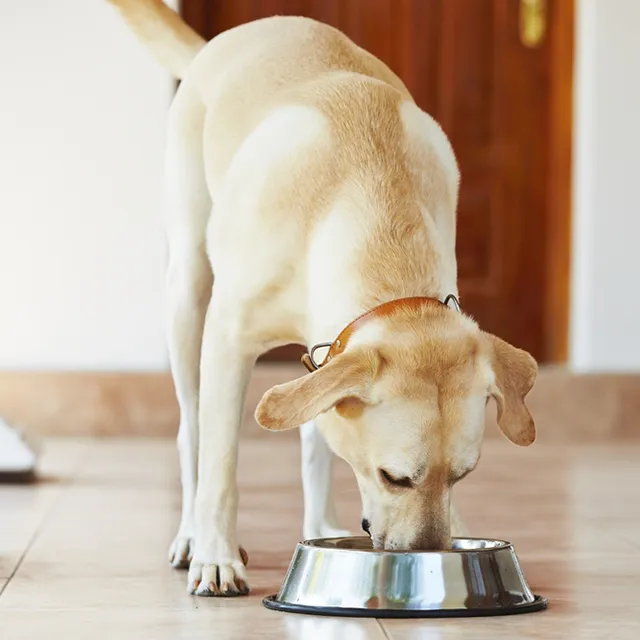
share:
A dog’s needs and nutritional requirements change as they transition from puppyhood to adulthood. Small dogs reach this stage by around 7 months of age while larger breeds can grow until they are a year old or even longer. To support them as adults, you need to understand their requirements and explore the different options available in terms of food. But not to worry, we’ve broken down everything there is to know—from healthy food for dogs to how many times to feed a dog and everything in between!
#1 Pick the right kind of food i.e adult dog food
Many pet parents opt for home-cooked food because they like to monitor the ingredients. However, unless prepared by a veterinary nutritionist, home-cooked meals prove to be deficient in essential nutrients needed by dogs to thrive. On the other hand, packaged dog food is specially formulated with all the right nutrients in the right quantities. Adult dogs benefit from complete and balanced adult dog food like Pedigree that can meet their nutritional needs.
#2 Essential nutrients to look for
Adult dogs require a good mix of nutrients for overall health. So make sure the adult dog food you pick contains omega 6 and zinc to support skin and coat health, protein to support strong muscles, and a blend of magnesium and potassium for healthy heart function.
#3 Match their need
Your dog’s needs vary depending on its size and the phase they are in. For example, small dogs would benefit from Pedigree® PRO Adult Dog Food - Small Breed. Small breeds have a different metabolic rate than large breeds and hence their energy requirements are also different. Pedigree® PRO Adult Dog Food - Small Breed is formulated with omega fatty acids and quality protein in the right quantities to support alertness and agility. Small breed dogs are also prone to oral health problems which is why Pedigree® PRO comes with added STPP (sodium tripolyphosphate) to support dental health.
A larger breed on the other hand would thrive on Pedigree® PRO Adult Dog Food Large Breed which is formulated with omega fatty acids and quality proteins to support alertness and agility. It also contains vital nutrients like magnesium, potassium, calcium, sodium, vitamins, and fatty acids to support healthy heart function. Large breeds need special care to ensure digestive health as their digestive physiology is different as compared to small breeds. Therefore, Pedigree® PRO also contains Prebiotic (MOS) to promote digestive health.
If your dog is pregnant or lactating, she would do very well with specially-formulated dog food like Pedigree® PRO Mother & Pup Starter. A pregnant or lactating mother requires a lot of energy to sustain herself and provide milk to her puppies. Pedigree® PRO Mother & Pup Starter contains Prebiotics (MOS) to support digestive health for the mother and pup. It also contains extra protein and fat to provide energy for pregnant and lactating mothers.
Every dog is unique and should be fed accordingly. So it’s always a good idea to pick an option that suits your pooch’s size as well as the phase they are currently in.
#4 Make them 'work' for their food
Most dogs dive into their food as soon as it is served. One simple way to establish discipline during meal time is to train your dog to ‘sit’ while you offer them their meal. You can also train them to ‘eat’ on command after a period of sitting for a few seconds after their meal is served. Dogs have an instinct and strong desire to ‘work’ for their meals, so this training will fulfill that desire and will also reinforce good behaviour.
#5 Try to supervise them when they eat (from a distance)
It is imperative that your pooch eats slowly and does not play/run/exercise too soon after a meal. Doing so can result in bloat (GDV), which occurs when a dog’s stomach fills with gas, fluid, or food, making it expand and pressure other organs. This is a serious issue and is always a medical emergency. If your dog is a fast eater, we recommend trying a slow feeder bowl.
#6 Choose the right food and water bowls
We recommend using metal and ceramic bowls to feed your dog food and water. This is because plastic is known to harbour bacteria that can cause illness. We also recommend ditching elevated bowls (unless recommended due to health issues) as it may increase the chances of bloat.
#7 Stick to a routine
Set out the dog food at set hours in the day so your pet learns when it is meal time. Ideally, take the food dish away after twenty minutes or so, so your dog knows to finish it in one go. As with most other behaviours, a rigid routine with two meals a day is the best way to keep your dog healthy and well-nourished.
#8 Say yes to treats and no to table scraps
If you love your pooch, there are dozens of ways to show them, but offering them your food isn’t one! Table scraps should always be off-limits, with no exceptions. Not only does it inculcate bad behaviour like begging, but it can also lead to health issues like obesity. Instead, we recommend giving your pooch specially formulated treats as a reward for good behaviour, to teach them new tricks, or even in puzzle toys to stimulate their brain. However, treats should never make up more than 10% of your pooch’s daily caloric intake.
If you are unsure whether the adult dog food you picked is suitable for your furball, there are a few telltale signs. Be sure to check for firm stools, a lovely, shiny coat, a wet nose, and a healthy amount of daily energy!
Review this article:





